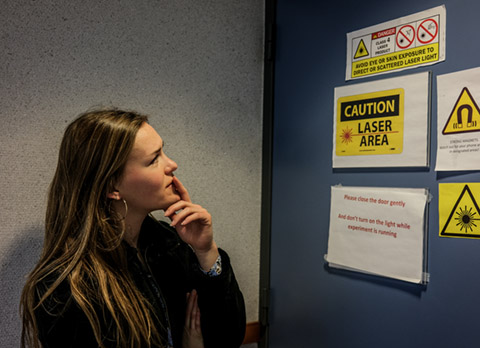
Who heeds all those instructions?
It’s a sign
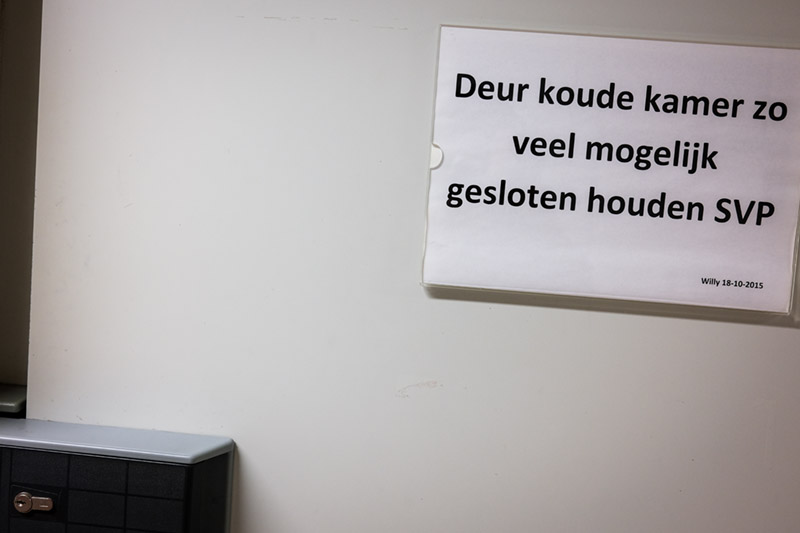
Super cool
Crosses, skeletons, prohibitions and notices that say ‘students only under supervision’ decorate the walls of the twelfth floor of the MWF building complex on the Antonius Deusinglaan, where biomedical engineering is housed.
PhD student Elkin (36) crosses the hallway in his lab coat. He’s holding a transparent box in his hands, filled with test tubes. He stops in front of a door with a large sign that says ‘Keep this cold room closed as much as possible please’ in Dutch and opens it.
‘Here we store all the chemicals that we need for experiments, but also the petri dishes that contain the final products’, says Elkin. He points to the boxes in the fridge, each with the name of a student and their supervisor on it. ‘I myself am working on medication to control diabetes and obesity, that’s what these test tubes are for.’
Above the thick door, it says that the temperature in the room ranges between 4 and 5 degrees Celsius. The cold is a necessity, explains Julia, who recently started her internship at the department. ‘It ensures that the liquids stay fresh: you get happy souls that survive for longer.’

Beware of thieves
The Faculty of Theology and Religious Studies in the Oude Boteringestraat is situated in what once used to be a courthouse. Its former prison cells have been transformed into computer rooms. But while the building doesn’t host criminals anymore, notifications on the wall do warn of intruders and thieves.
It’s necessary to put up those warnings, explains the caretaker, because it is difficult to check who comes and goes. ‘Every now and then, some scumbag walks in here.’
Master student Kjelda (23) studies in the building often, but she’s never noticed anything bad happening. ‘I once heard that someone’s AirPods got stolen, but that’s it.’ Nevertheless, she does understand why the signs are there. ‘This is an old building with no cameras. If your stuff gets stolen, there is no way of finding out who did it.’
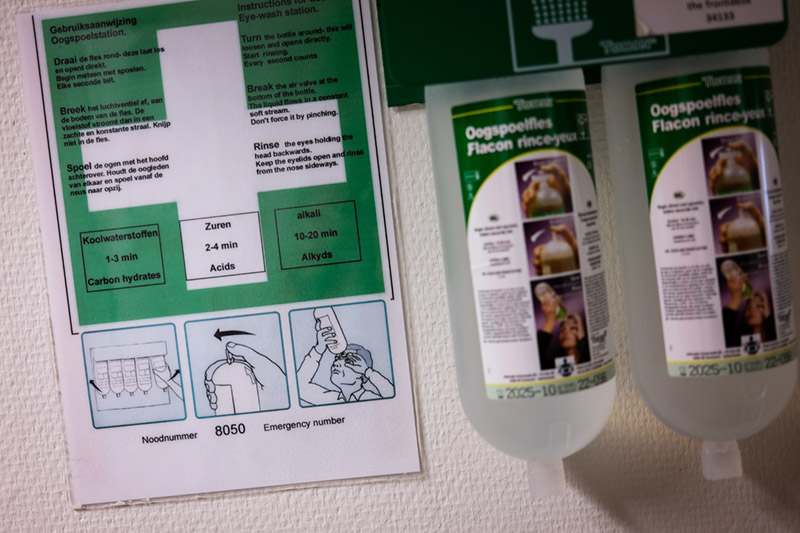
Health hazards
Nijenborgh 4, the Zernike building that houses the physics department, is decorated from top to bottom with signs warning of health hazards.
Next to the eye-washing station hang laminated instructions on how to use it. A good thing, says physics student Azminal (30), who is working in the next room. ‘I feel safer with protection measures in place’, he says. ‘We work with acid and electricity, which comes with certain risks.’
In the three years that Azminal has been studying in the building, he’s never experienced a safety incident, but he knows that could change at any moment. ‘If we get contaminated, we can use these sprays to mitigate the harm to our bodies.’
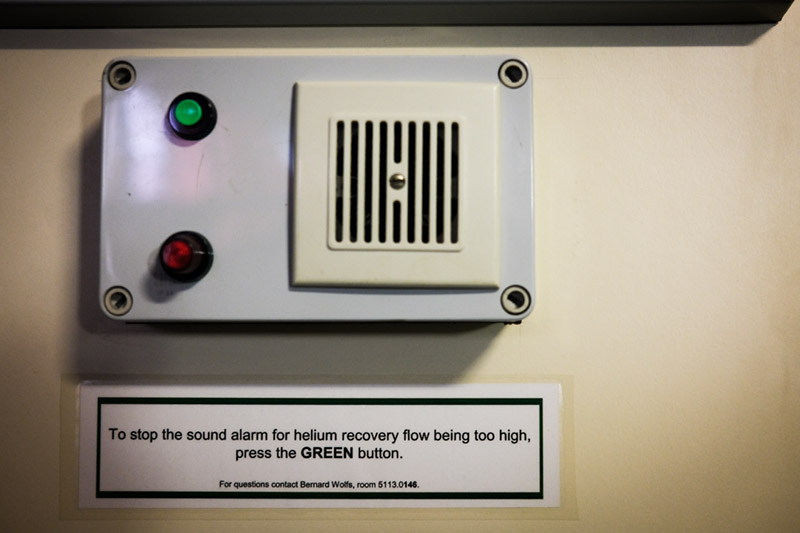
Balloon alarm
Another note in the physics department, next to a wall-mounted panel with a red button and a green button: ‘To stop the sound alarm for helium recovery flow being too high, press the GREEN button.’
Nanoscience PhD student Freddy (27) explains why the sign is there: ‘We are working with liquid helium, which is very expensive’, he says. ‘Whenever there is any helium left after an experiment, we preserve it in a big balloon.’
The helium is transferred to the balloon – which is located elsewhere in the building – through tubes. Sometimes an alarm goes off: that means the balloon is getting too big. ‘You don’t want it to burst’, says Freddy. ‘So all experiments are brought to a halt until the red light turns off again.’
That means that the balloon has some space again and it is safe to continue. He doesn’t know exactly what the consequences would be if one were to ignore the signal. ‘Better to not find out.’
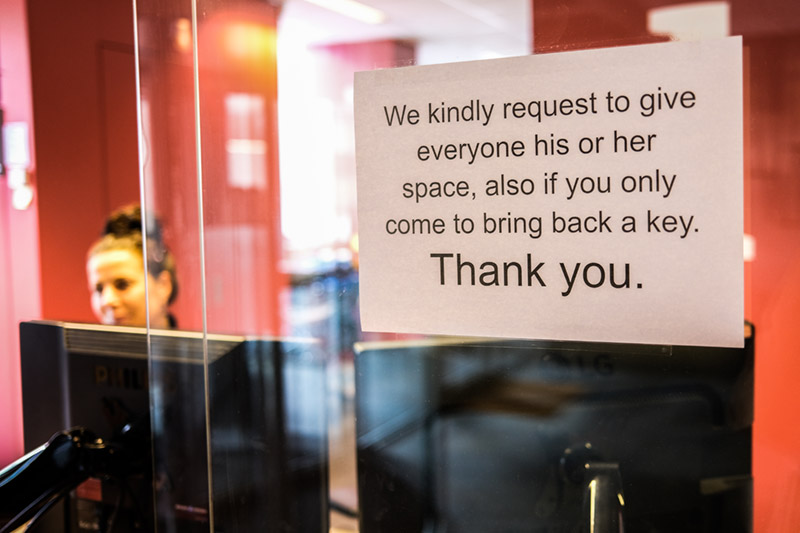
Give us space
‘We kindly request to give everyone his or her space, also if you only come to bring back a key. Thank you’, says a notice on the glass partition of the behavioural and social sciences reception desk in the Heymans building.
Jeanette, who works at the front desk, explains why they put it up. Often, when people return keys to a room, they don’t wait for their turn. Instead, they just push people aside or squeeze their arms through.
‘It seems that people don’t really realise how rude that is. It’s disrespectful to say the least.’ But thankfully, the notice works, according to Jeanette. ‘People are giving others more space now.’
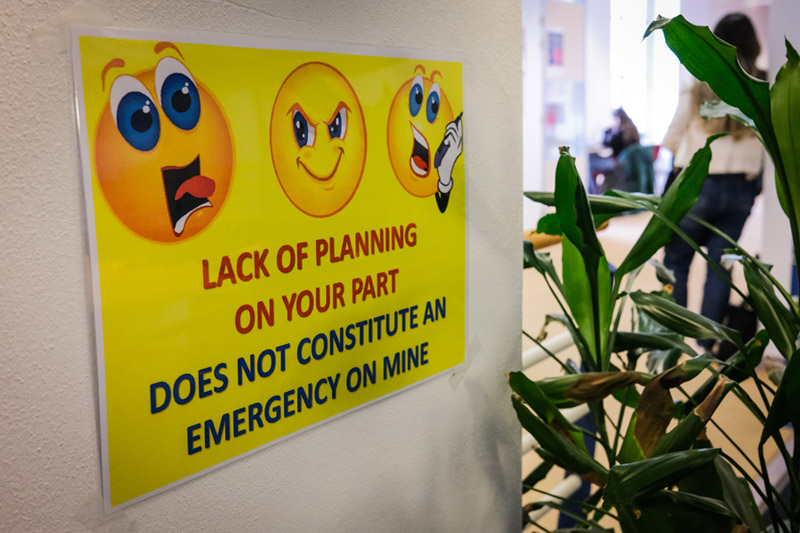
No caffeine in the study areas
‘Lack of planning on your part does not constitute an emergency on mine’, reads a printout bearing three smileys – one that’s panicking, one that’s on the phone, and one with an annoyed look on its face – posted in the law faculty library.
It’s not the only passive-aggressive missive there. Another reads: ‘You are free to drink your coffee here, next to the coffee machine. Not in the study area.’ It doesn’t seem to help much: several students have full cups of coffee on their desks.
Master student Ella (23) is one of them. ‘I don’t abide by that rule’, she confesses. ‘Neither does anyone else by the way. If everyone were to drink their coffee around the machine, you’d create a sort of cafeteria, where people start chatting to each other. That would be super annoying.’
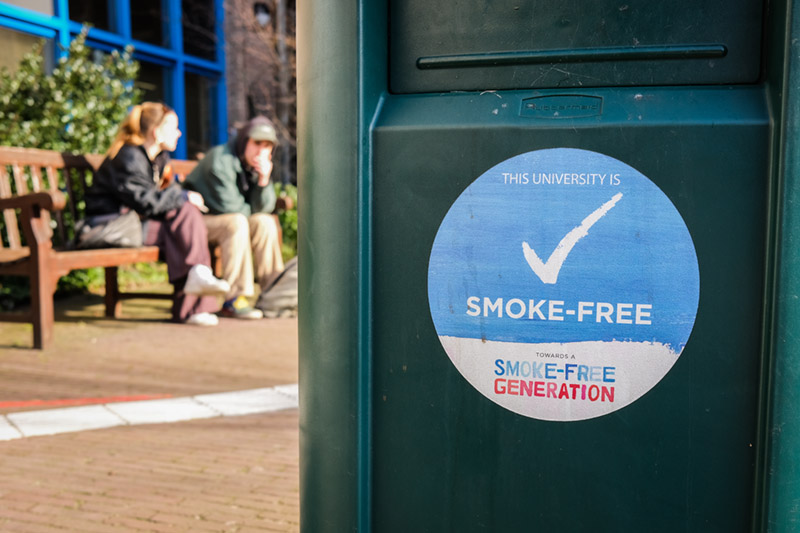
Smoke-free university
The no-smoking signs all over the university grounds are another example of a plea that falls on deaf ears. International relations student Johan is sitting in front of the Harmony building, smoking a cigarette. Sure, he’s seen them, ‘but I don’t think I’m doing much harm by enjoying my ciggy in the sun on a bench.’
His friend and fellow student Alex agrees: ‘Especially when you share it’, she says while taking a puff from Johan’s cigarette.
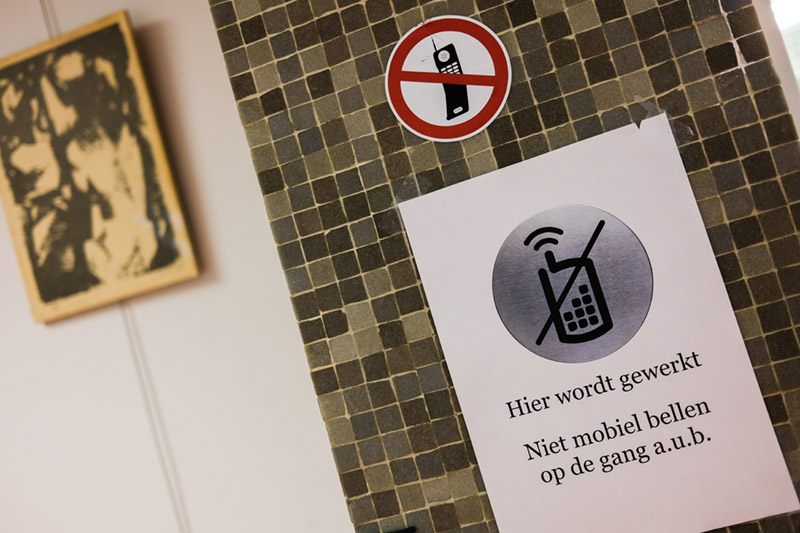
No phones
‘Do not make phone calls here’, says a sign in Dutch in the hallway of the Harmonie building. In front of it stand two girls with their eyes fixed on the screens of their phones.
Student of European languages and cultures Iris (19) is listening to a podcast, but she’s never noticed the sign before. ‘Seeing the type of phone, I assume that the sign has been there for a long time. I don’t think it still has any effect’, she says.
Nevertheless, she does acknowledge that the ban exists for a reason. ‘It would enhance social interaction between students and also prevent noise disruption in the hallway’, she says.
‘Everyone uses their phones in the hallways nowadays’, says Lisa (18), who also studies European languages and cultures. ‘No idea why the sign is hanging there. I’ll continue to use my phone anyway.’